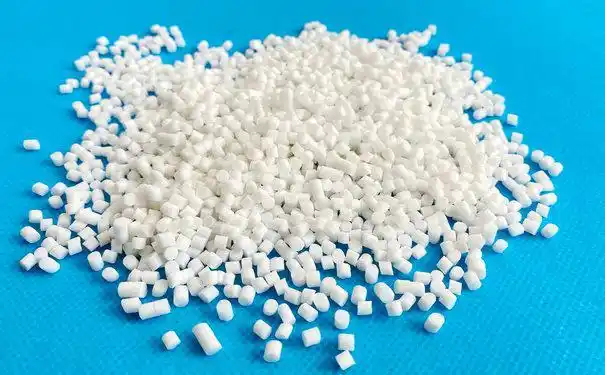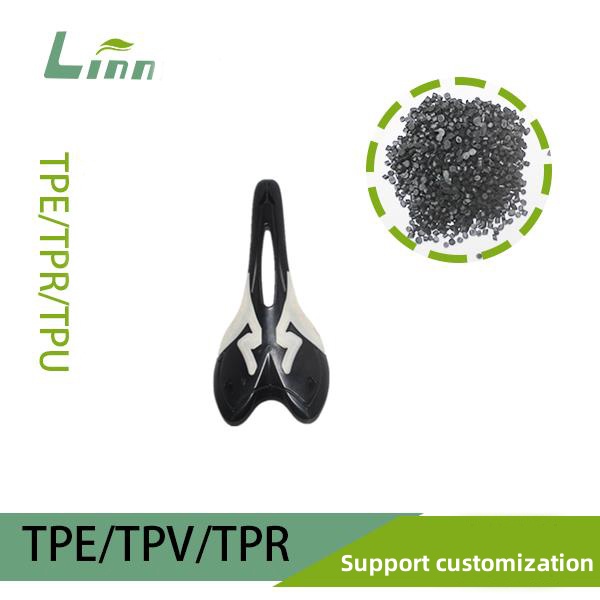As someone who’s spent years working with materials in industries ranging from consumer goods to medical devices, I’ve often heard the question, Is silicone the same as TPE? It’s a query that pops up in workshops, online forums, and even casual chats with friends curious about the squishy phone case in their hand or the stretchy yoga mat under their feet. The confusion is understandable—both silicone and thermoplastic elastomers (TPE) feel soft, look similar, and show up in many of the same products. But are they the same? Spoiler alert: they’re not, and the differences matter more than you might think. Let’s dive into this topic with a clear head, unpack the science, and explore why knowing the distinction can make a big difference, whether you’re buying a product or designing one.

Understanding the User’s Intent
When someone searches “Is silicone TPE?”, they’re likely wrestling with uncertainty. Maybe they’re shopping for a kitchen spatula and wondering if a silicone one is better than a TPE alternative. Or perhaps they’ve noticed their TPE yoga mat feels different from a silicone one and want to know why. The intent behind this search is about clarity—users want to understand the differences between these materials, their safety, performance, and suitability for specific uses. They might also be concerned about cost, durability, or environmental impact. With this in mind, I’ll break down the characteristics of silicone and TPE, compare them head-to-head, and share practical insights, all while weaving in personal experiences to make this feel like a conversation with a knowledgeable friend.
What Are Silicone and TPE?
Let’s start by getting to know these materials. Imagine silicone and TPE as cousins in the world of flexible materials—they share some traits but have distinct personalities.
Silicone: The Heat-Resistant Workhorse
Silicone is a synthetic polymer made from silicon, oxygen, carbon, and hydrogen. It’s like the superhero of flexible materials, known for its ability to withstand extreme temperatures, from the scorching heat of an oven to the icy chill of a freezer. Silicone is a thermoset material, meaning once it’s molded into a shape, it’s set for life—like a cake baked in a pan. This stability makes it a go-to for products like bakeware, medical implants, and baby bottle nipples.
I remember the first time I used a silicone spatula while baking. The way it scraped every last bit of batter from the bowl without melting under the heat of my enthusiasm was nothing short of magical. Silicone’s non-stick, non-toxic, and durable nature makes it a favorite in kitchens and hospitals alike.
TPE: The Versatile Chameleon
Thermoplastic elastomers (TPE), on the other hand, are a class of materials that blend the flexibility of rubber with the moldability of plastics. Think of TPE as a shape-shifter—it can be melted, molded, and remolded without losing its properties. This recyclability is a big reason why TPEs are used in everything from yoga mats to phone cases, car parts to shoe soles. TPEs come in various types, like styrenic (TPE-S), polyurethane-based (TPE-U), and vulcanized (TPE-V), each with its own quirks.
In my early days in the industry, I worked on a project designing TPE grips for tools. The ability to tweak the softness and color without breaking the bank was a game-changer. But I also learned that TPE’s behavior can vary depending on its formulation, which is where the confusion with silicone often begins.

Are Silicone and TPE the Same?
Short answer: No, silicone is not TPE. While both materials are soft, flexible, and used in similar applications, they’re chemically and structurally distinct. Silicone is a thermoset polymer, while TPE is a thermoplastic elastomer. This difference in their molecular makeup leads to unique properties that set them apart.
To make this crystal clear, let’s compare silicone and TPE across key characteristics in a table:
|
Property |
Silicone |
TPE |
Best For |
|---|---|---|---|
|
Material Type |
Thermoset (non-recyclable) |
Thermoplastic (recyclable) |
Silicone: High-heat applications; TPE: Cost-sensitive products |
|
Temperature Range |
-60°C to 230°C (some up to 300°C) |
-30°C to 130°C (varies by type) |
Silicone: Ovens, freezers; TPE: Room-temp uses |
|
Flexibility |
Highly flexible, slightly less elastic |
Very elastic, rubber-like |
Both: Grips, seals, soft-touch products |
|
Cost |
Generally more expensive |
More cost-effective |
TPE: Budget-friendly products; Silicone: Premium applications |
This table highlights why silicone and TPE aren’t interchangeable, even if they feel similar in your hand. Silicone’s ability to handle extreme temperatures makes it ideal for cooking or medical uses, while TPE’s affordability and recyclability make it a darling of consumer goods.
Why the Confusion?
The mix-up between silicone and TPE often comes from their shared traits: both are soft, flexible, and often used in products that feel “rubbery.” A silicone baking mat and a TPE yoga mat might look and feel similar at first glance, but their performance tells a different story. For instance, try tossing a TPE mat in a 200°C oven, and you’ll end up with a melted mess—trust me, I’ve seen the aftermath of such experiments in testing labs.
Another source of confusion is marketing. Some manufacturers label products as “silicone-like” or “rubber-like” without clarifying the material, leaving consumers scratching their heads. I once bought a “silicone” phone case that turned out to be TPE—it was cheaper but started to degrade after a few months in the sun. That experience taught me to always check the fine print.
Key Differences in Performance
Let’s dig deeper into how silicone and TPE behave in real-world scenarios. These differences can help you decide which material suits your needs, whether you’re a consumer or a product designer.

Durability and Aging
Silicone is like a marathon runner—it keeps going strong even under tough conditions. It resists UV light, ozone, and chemicals, making it ideal for outdoor or high-stress applications. I’ve seen silicone seals in industrial equipment last decades without cracking or fading.
TPE, however, is more like a sprinter—fantastic for short-term flexibility but less resilient over time. Some TPEs, especially styrenic ones, can degrade when exposed to sunlight or harsh chemicals. That said, high-quality TPEs with UV stabilizers can hold up well, as I learned when designing TPE grips for outdoor tools.
Safety and Toxicity
Safety is a big concern, especially for products like baby toys or medical devices. Both silicone and TPE can be formulated to be non-toxic and safe for skin contact, meeting standards like FDA, REACH, or RoHS. Silicone has a slight edge here because it’s inherently inert and less likely to leach substances. TPEs, especially those with plasticizers like mineral oil, can sometimes feel oily (a phenomenon called oil bloom), raising concerns about safety. But rest assured, reputable manufacturers use safe, tested additives.
I recall a project where we chose silicone for a medical catheter because of its biocompatibility. TPE was a contender, but we needed a material that wouldn’t react with bodily fluids over long periods. Silicone won hands-down.
Environmental Impact
In today’s world, sustainability matters. TPE has a leg up here because it’s recyclable. You can melt it down and reshape it, reducing waste. Silicone, as a thermoset, can’t be recycled in the same way, though some companies are exploring silicone recycling programs. If you’re eco-conscious, TPE might feel like a greener choice, but silicone’s durability means it lasts longer, reducing the need for replacements.
Cost and Manufacturing
Let’s talk money. TPE is generally cheaper to produce and process, which is why it’s common in mass-market products like phone cases or yoga mats. Silicone, with its higher material and processing costs, is often reserved for premium or specialized applications. When I worked on a budget-friendly product line, TPE was our go-to because it kept costs down without sacrificing that soft, grippy feel.
Practical Tips for Choosing Between Silicone and TPE
So, how do you decide which material is right for you? Here are some practical tips, drawn from my years of working with both:
For High-Heat Applications: Choose silicone. Whether it’s a baking mat, oven mitt, or medical sterilization tray, silicone’s heat resistance is unmatched. I learned this when a client tried using a TPE mat in an oven—let’s just say it didn’t end well.
For Budget-Friendly Products: Go with TPE. If you’re buying or designing consumer goods like grips, toys, or fitness gear, TPE offers a great balance of performance and cost. Just ensure it’s from a reputable source to avoid low-quality formulations.
Check the Environment: If the product will face sunlight, chemicals, or extreme temperatures, silicone is the safer bet. For indoor or mild conditions, TPE works fine. I once recommended TPE for indoor gym equipment grips, and they’ve held up beautifully.
Look for Certifications: Whether it’s silicone or TPE, check for safety certifications like FDA or RoHS. This ensures the material is safe and high-quality. I always advise clients to ask manufacturers for material data sheets—it’s like reading the ingredients list on your food.
Test the Feel: If you’re shopping in-store, give the product a squeeze. Silicone often feels slightly denser and less “rubbery” than TPE. If it feels oily or sticky, it might be a low-quality TPE.

A Personal Perspective
Having worked with both materials, I’ve developed a soft spot for each. Silicone feels like a trusted friend—reliable, sturdy, and ready for anything. TPE, on the other hand, is like a creative spark—versatile, affordable, and full of possibilities. But I’ve also seen the pitfalls. Low-quality TPEs can degrade or feel greasy, while poorly processed silicone can be brittle. My advice? Know your needs and do your homework. A little research goes a long way, whether you’re picking a spatula or designing a product line.
Related Questions and Answers
To wrap up, here are some common questions about silicone and TPE, answered with the same clarity and care:
Q: Can I use a TPE product in the oven like silicone?
A: Nope, stick to silicone for oven use. TPE can melt or deform at high temperatures, while silicone laughs off the heat.
Q: Is silicone safer than TPE for baby products?
A: Both can be safe if certified (e.g., FDA-approved). Silicone’s inert nature gives it a slight edge for long-term use, like in pacifiers or bottle nipples.
Q: How do I tell if my product is silicone or TPE?
A: Check the label or ask the manufacturer. You can also do a pinch test: silicone feels denser and less stretchy than TPE. If it’s oily, it’s likely TPE.
Q: Are silicone and TPE environmentally friendly?
A: TPE is recyclable, making it more eco-friendly in that sense. Silicone lasts longer but is harder to recycle. Choose based on your priorities.
Q: Why is silicone more expensive than TPE?
A: Silicone’s higher material and processing costs drive up the price. TPE’s simpler manufacturing makes it a budget-friendly option.





